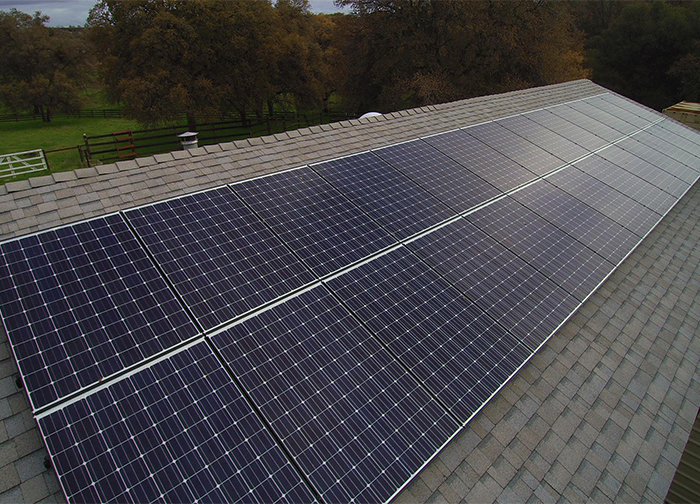Panel Installation
The farm is currently installing a renewable micro grid with 50 solar panels and 3 inverters fitting onto the roof of the main barn housing the farms machinery. It will generate a total of 36kw of power that is more than the farm currently consumes ensuring it become carbon neutral. The balance of power produced will be sold back to the National Grid.
The system will produce 36,000kwh per year reducing the equivalent of 40 tonnes of carbon dioxide that would have been produced through fossil fuel sources.
Solar panels convert energy from sunlight into electricity, using photovoltaics (PV), Photovoltaic cells convert light into an electric current using the photovoltaic effect. The amount of sunlight hitting the earth each day is enough to power all the world’s energy needs for a year.
The first solar cell was constructed by Charles Fritts in the 1880s but it wasn’t until 1954 when Daryl Chapin in the US created the first silicon solar cell that it became commercially viable by rapidly increasing the solar cells efficiency. Without this advance then the boom in space exploration in the 60’s would not have been possible as all satellites and deep space missions have been powered by solar arrays.
As the cost of solar electricity has fallen, the number of grid-connected solar PV systems has grown into the millions and utility-scale photovoltaic power stations with hundreds of megawatts being built. Solar PV is rapidly becoming an inexpensive, low-carbon technology to harness renewable energy from the Sun. The current largest photovoltaic power station in the world is the Pavagada Solar Park, Karnataka, India with a generation capacity of 2050 MW.[2]
The International Energy Agency projected that by 2050, solar power would contribute 32% of the worldwide electricity consumption, and solar would be the world's largest source of electricity. In 2017, solar power provided 1.7% of total worldwide electricity production, growing 35% from the previous year



 © . All rights reserved |
© . All rights reserved |